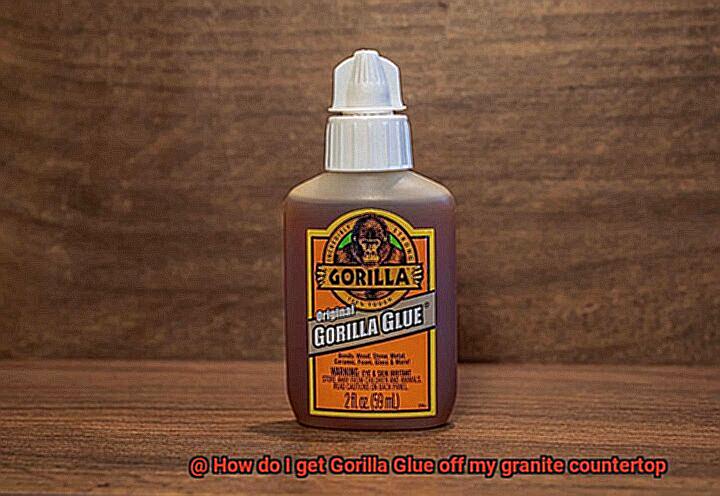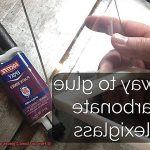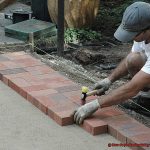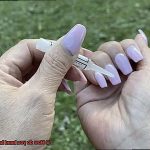Imagine this: You’ve just completed a DIY project that fills you with an overwhelming sense of pride and accomplishment. Your granite countertop glistens, adding a touch of elegance to your kitchen. But hold on. As your eyes scan over your masterpiece, they come to rest on an unwelcome intruder – a stubborn glob of Gorilla Glue tarnishing the pristine surface. Panic sets in as you frantically wonder, “How in the world do I salvage this?”
Fear not. In this enthralling blog post, we’re about to unravel the mysteries surrounding the removal of Gorilla Glue from granite countertops. Get ready for an adventure that will not only rescue your countertop from its adhesive nightmare but also equip you with invaluable knowledge for future mishaps.
First things first, let’s dive into the nature of Gorilla Glue. Renowned for its super-strong bond, this adhesive can pose quite a challenge when it mistakenly finds its way onto delicate surfaces like granite. However, armed with the right techniques, you can bid farewell to it like a pro.
We’ll explore a plethora of methods to tackle this task head-on, using everyday household items that are likely already at your fingertips. From harnessing the power of heat and steam to employing gentle abrasive tools, we’ll guide you through step-by-step processes that ensure the glue dissipates without leaving even a hint behind.
But wait. That’s not all. We’ll also unveil essential tips to safeguard your beloved granite countertop against potential damage. After all, prevention is truly better than any cure.
Whether you’re an intrepid DIY enthusiast or simply a homeowner seeking a quick fix, this article promises to arm you with the knowledge needed to conquer the Gorilla Glue invasion on your granite masterpiece. Take a deep breath, my friend, and prepare to resurrect your countertop’s former glory.
Stay tuned as we reveal the secrets to banishing the encroaching Gorilla Glue menace from your granite countertop, elevating your living space back to its original splendor.
How to Remove Excess Gorilla Glue from Granite Countertops
Contents
- 1 How to Remove Excess Gorilla Glue from Granite Countertops
- 2 Softening Remaining Glue Residue with Heat
- 3 Scraping Off the Softened Glue with a Plastic Scraper or Putty Knife
- 4 Dissolving Remaining Residue with a Solvent
- 5 Cleaning the Area After Using a Solvent
- 6 Preventive Measures to Avoid Spills on Granite Countertops
- 7 Professional Help for Stubborn Stains
- 8 Conclusion
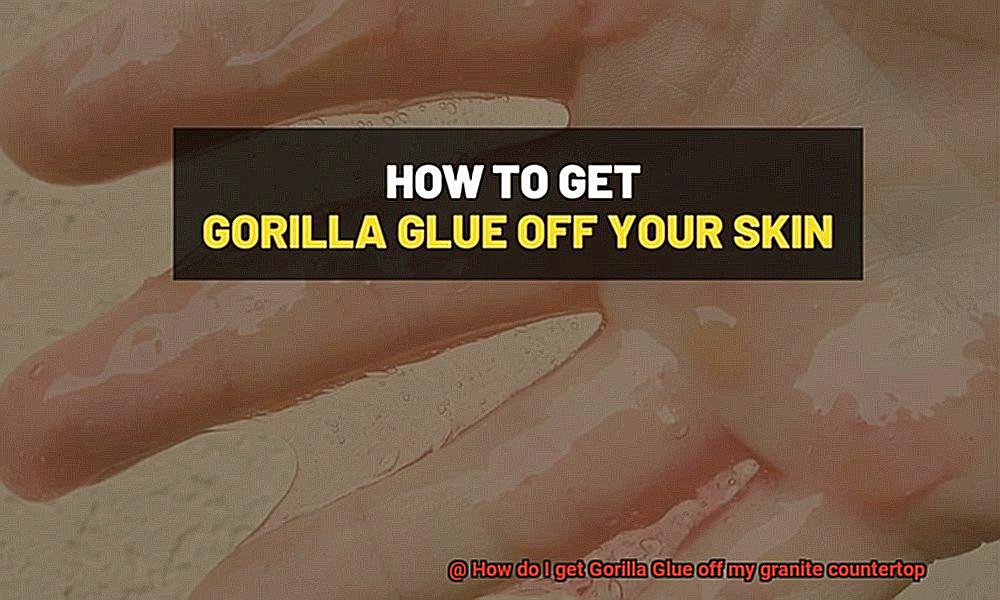
Granite countertops are known for their beauty and durability, but sometimes accidents happen and we find ourselves with excess Gorilla Glue on them. Don’t panic. With a few simple steps, you can safely remove the glue without causing any damage. Let’s dive into the process.
Act Swiftly to Save Your Surface:
The key to successfully removing excess Gorilla Glue from granite countertops is to act quickly. The longer the glue sits, the harder it becomes to remove. So gather your tools and prepare to tackle the problem head-on.
Scraping Away the Excess:
To begin, gently scrape off any excess glue using a plastic scraper or putty knife. Avoid using metal scrapers or blades, as they can leave unsightly scratches on the surface of your beloved granite countertop.
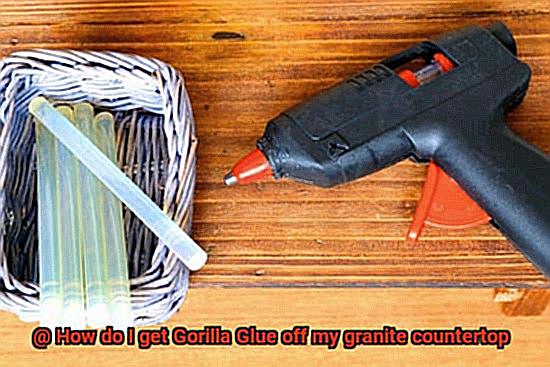
Softening the Sticky Residue:
After removing the excess glue, it’s time to soften the remaining residue. Apply gentle heat to the affected area using a hairdryer or heat gun set on low heat. The warmth will help loosen the glue, making it easier to remove.
Carefully Scrape Away the Softened Glue:
Once the glue has been softened, use your plastic scraper or putty knife to gently scrape away the softened residue. It may require patience and repeated scraping to completely eliminate all traces of glue from your granite countertop. Take your time and be meticulous to prevent any damage.
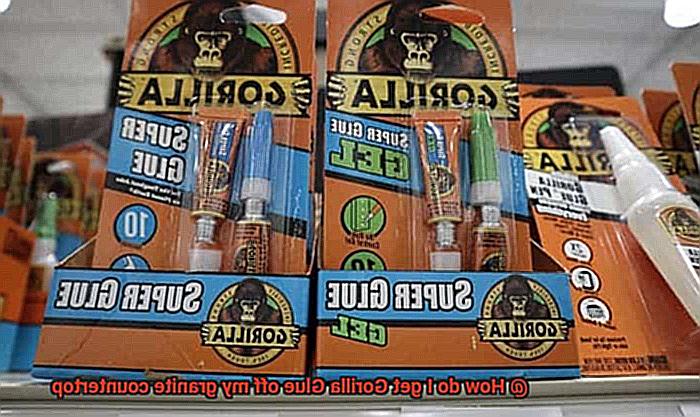
Employing Solvents as Last Resorts:
If traces of Gorilla Glue persist after scraping, you can turn to solvents to dissolve the remaining residue. Acetone is often recommended for this purpose. However, before proceeding, conduct a patch test on a small, inconspicuous area to ensure it won’t cause any damage or discoloration.
Apply acetone to a cloth or sponge and gently rub it onto the glue residue until it dissolves. Remember to wear gloves and work in a well-ventilated area. After using the solvent, clean the area with warm soapy water and a soft cloth to remove any lingering residue.
Seeking Professional Assistance:
If the Gorilla Glue stain proves stubborn and cannot be fully removed using the aforementioned methods, don’t hesitate to seek professional help. A stone restoration specialist possesses the expertise and specialized products needed to remove the glue without harming your precious granite countertop.
Softening Remaining Glue Residue with Heat
Get ready to unleash the power of heat and bid farewell to those pesky adhesive remnants.
When it comes to Gorilla Glue, it’s no secret that it forms an unyielding bond when it dries on a surface. But fear not, for heat is our secret weapon in this battle. By applying heat to the glue, we can actually soften it and make it much easier to scrape off. It’s like magic.
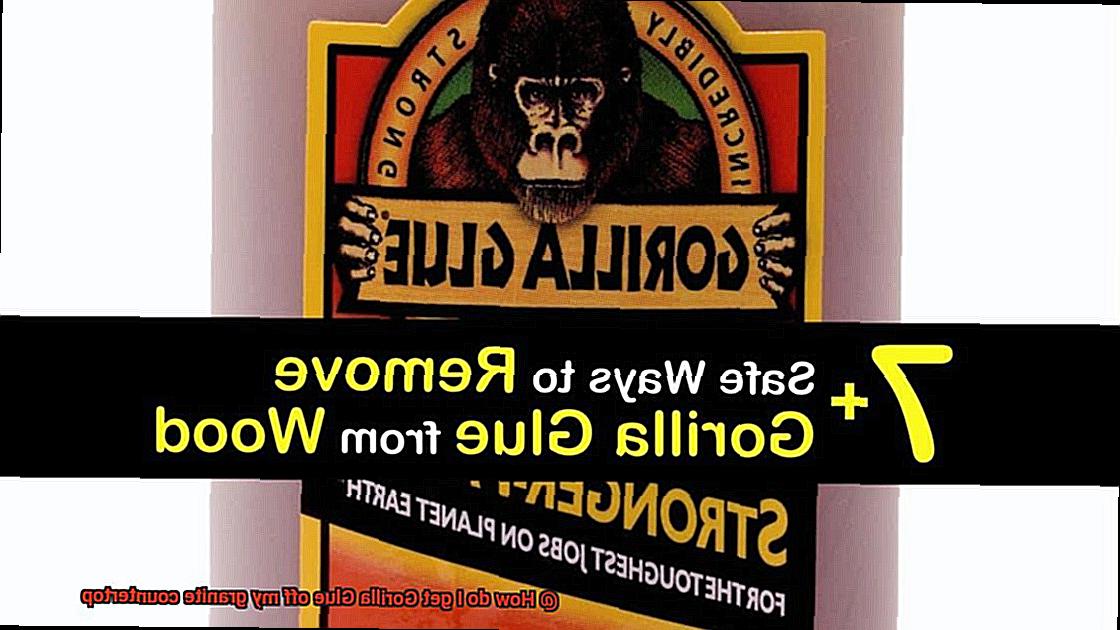
Now, let me guide you through the step-by-step process of softening that pesky glue residue using the mighty force of heat. Grab your trusty hairdryer or heat gun, my friends, and make sure it’s plugged in and set to the highest heat setting. Safety goggles on – we’re about to embark on a glue-removing adventure.

Hold the hairdryer or heat gun at a distance of about 6-8 inches from the glue residue. Start directing that scorching hot air towards the glue, making sure to cover the entire area evenly. Watch closely as the glue succumbs to the irresistible power of heat and becomes soft and pliable.
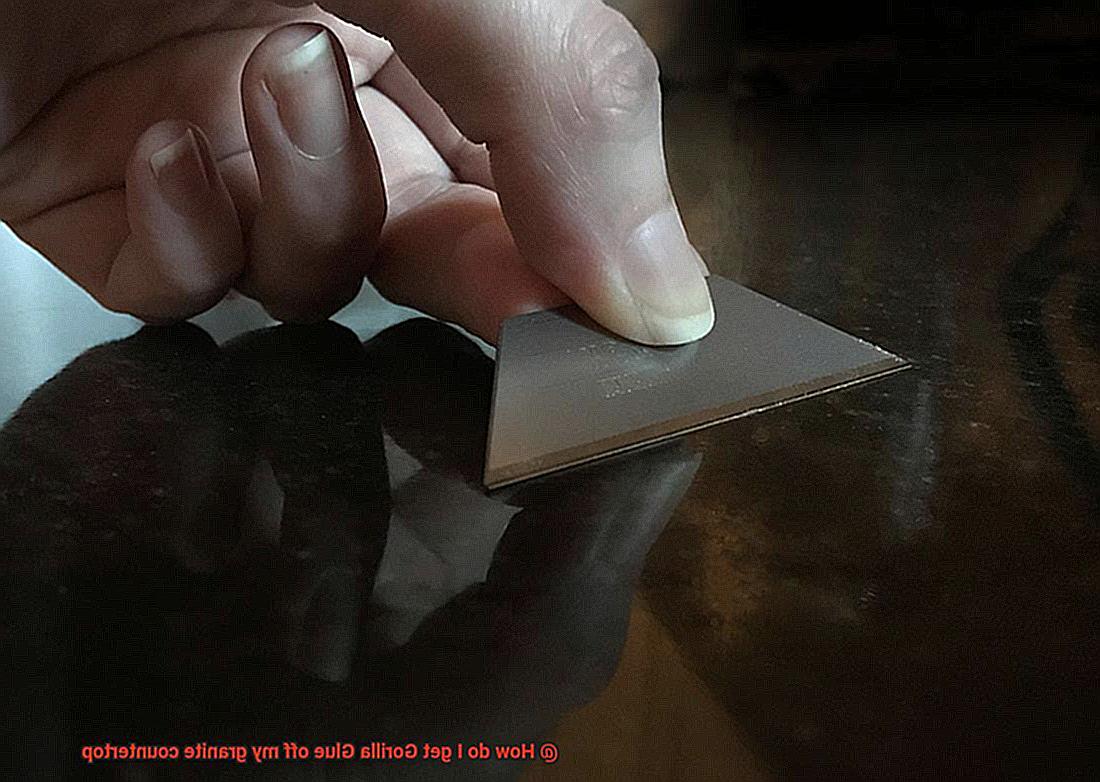
But hold your horses. Remember not to go overboard with the heat or use excessive force when scraping off the glue. We don’t want any collateral damage on your precious countertop. Take your time and proceed with caution, my friends.
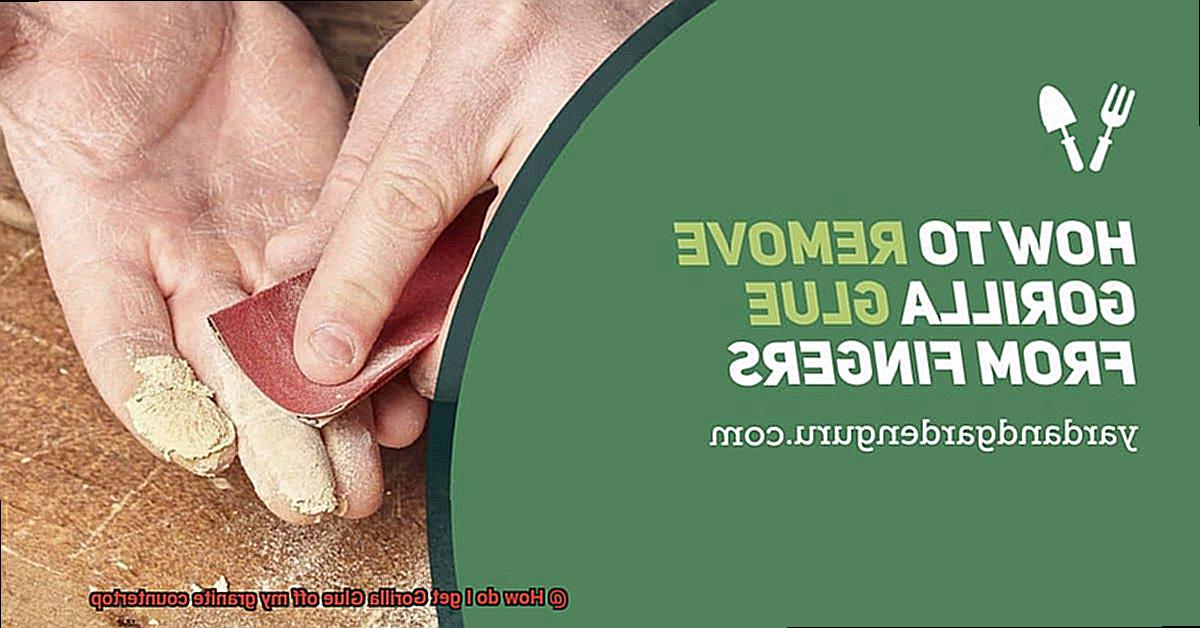
Once the Gorilla Glue has softened under the relentless assault of heat, it’s time to take action. Arm yourself with a plastic scraper or a soft cloth – these are your weapons of choice for this delicate mission. Gently remove the softened residue from the granite surface, but beware. Do not even think about using metal scrapers or abrasive materials. They are the enemies of your countertop and will leave scars behind. Opt for non-abrasive tools that will treat your countertop with the respect it deserves.
Scraping Off the Softened Glue with a Plastic Scraper or Putty Knife
You’ve conquered the challenge of softening that stubborn Gorilla Glue, and now it’s time to bid it farewell from your magnificent granite countertop. But wait. Before you grab any old scraping tool, allow me to guide you through the art of scraping off the softened glue using a plastic scraper or putty knife. Prepare yourself, don your expert hat, and let us embark on this journey together.
Step 1: Soften the Glue:
Ah, the power of heat. As we’ve learned before, direct scorching hot air from a hairdryer or heat gun onto the glue. Watch in awe as the glue succumbs to the enchantment of heat and becomes supple and moldable. However, remember to exercise caution. Maintain a safe distance from the surface and apply heat in short bursts.
Step 2: Choose Your Tools with Care:
Now that the glue has yielded to your heat skills, it’s time to select your weapon wisely: a plastic scraper or putty knife. Beware of the metallic temptations. They possess the ability to scratch or mar your granite countertop, an outcome we must vehemently avoid. Instead, embrace the gentleness of plastic tools for this delicate task.
Step 3: Scrape Away Gracefully:
With your chosen tool in hand, approach the softened glue with grace and finesse. Commence at one edge of the adhesive and gently scrape it off in small sections, gradually working your way towards the center. Maintain steady pressure, ensuring not to delve too deeply into the countertop’s pristine surface.
Step 4: Conquer Stubborn Remnants:
Sometimes, Gorilla Glue clings onto your countertop with unwavering determination. Fear not. Introduce a small amount of acetone or nail polish remover to further weaken its grip. However, exercise caution and test these substances in an inconspicuous area beforehand, lest they bring forth discoloration or damage.
Step 5: Erase the Evidence:
As you skillfully scrape away the glue, keep a damp cloth within reach to swiftly wipe away any remaining residue or excess adhesive. Witness the disappearance of the sticky remnants and revel in the cleanliness of your countertop. It’s a truly satisfying sight.
Dissolving Remaining Residue with a Solvent
In our previous adventure, we delved into the art of scraping away stubborn Gorilla Glue residue from granite, leaving no trace behind. But what about those pesky remnants that refuse to budge? Fear not, for today we shall uncover the secrets of dissolving that stubborn residue with the help of solvents. Join me as we embark on this journey of effortless residue removal.
Choosing the Right Solvent:
Before we dive into the step-by-step process, let’s first understand the importance of selecting a compatible solvent for our beloved granite countertops. We want to bid farewell to the glue residue, not harm our precious surface or strip away its protective sealant. So, tread carefully and choose your solvent wisely.
Acetone: The Mighty Warrior
One popular choice is acetone, a powerful solvent commonly found in nail polish removers. However, always remember to test it on a small and inconspicuous area before proceeding, ensuring it won’t cause any damage or discoloration.
Step 1: Let the Fresh Air In
Ventilation is key. Open windows or turn on fans to ensure proper air circulation. Acetone can be quite potent, and we don’t want any fumes clouding our path to victory.
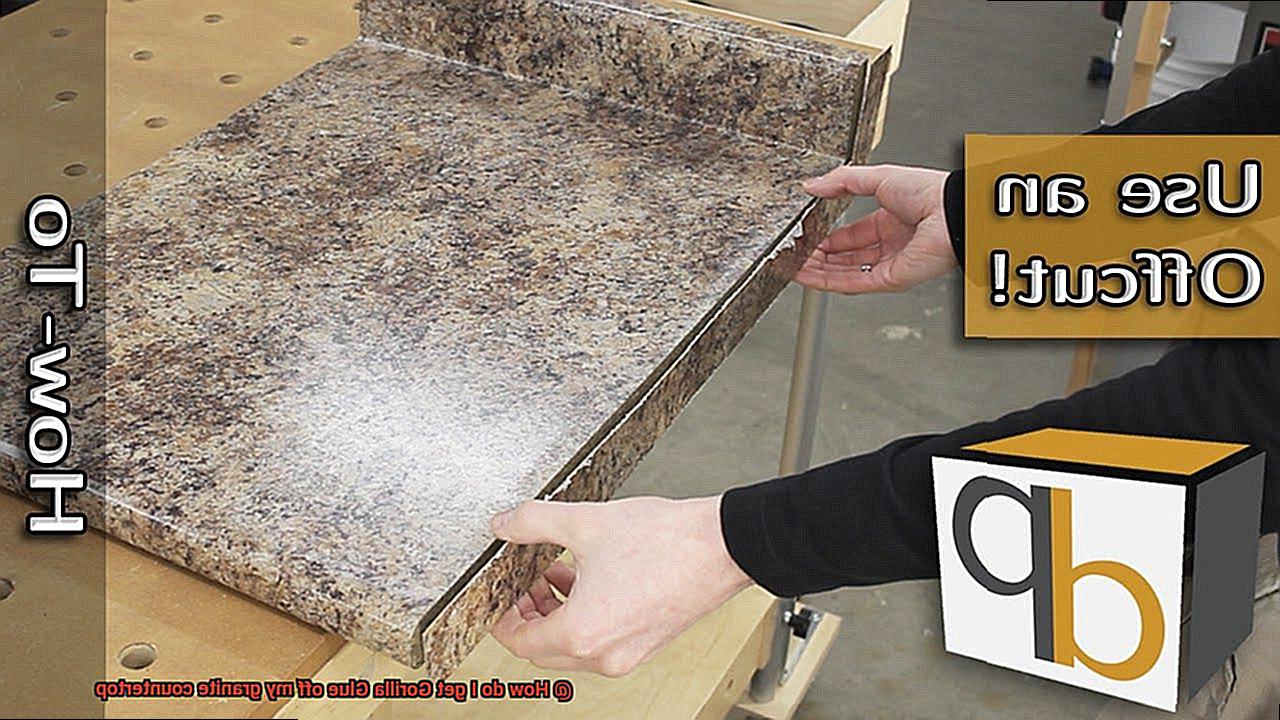
Step 2: Shield Your Hands
Equip yourself with protective gloves before diving into action. These will shield your hands from direct contact with the potent solvent, keeping them safe and sound throughout the process.
Step 3: Dab and Soften
Now it’s time to unleash the power of acetone. Moisten a clean cloth or cotton ball with this magical elixir and gently dab it onto the stubborn glue residue. Remember, grace and finesse are our allies here – avoid vigorous rubbing that could harm the granite’s surface.
Step 4: Let it Work its Magic
Patience is a virtue, my friends. Allow the acetone to work its magic and soften the glue residue. This will take a few minutes, so resist the urge to rush into battle prematurely.
Cleaning the Area After Using a Solvent
Our mission to vanquish Gorilla Glue residue from granite countertops continues. In our previous expedition, we learned about the formidable solvent acetone and its safe application. But fear not, for our odyssey does not conclude there. Today, we embark on the vital next phase: the art of cleaning the area after using a solvent. Prepare your cleaning cloths, don your cleaning cape, and let us forge ahead.
Picking the Perfect Solvent:
Before commencing our cleansing ritual, it is paramount to choose the optimal solvent for the task at hand. Acetone stands as our stalwart ally in combatting Gorilla Glue residue, yet granite countertops require tender loving care. Test a discreet area of the countertop with acetone to ensure no harm comes to it.
Banishing Excess Residue:
Once you have triumphantly dissolved the Gorilla Glue with acetone, it is time to eliminate any lingering remnants. Seize a pristine cloth or paper towel and delicately eradicate as much residue as possible. Exercise caution to prevent any scratches or blemishes on the granite surface.
Purify with Warm Sudsy Water:
Having rid your countertop of most of the adhesive, it is now time for a thorough purification. Dampen another immaculate cloth with warm water and imbue it with mild dish soap for an extra cleansing boost. Employ gentle circular motions to cleanse the area where the glue once clung, liberating any remaining residue and ensuring an immaculate finish.
Thorough Rinsing Ritual:
After engaging in a soapy battle against the glue, it is crucial to rinse your cloth thoroughly and once again sweep across the entire area. This step is essential in eradicating any residual soap or solvent that may lurk on the countertop. We must eliminate any potential stickiness or discoloration that may haunt us.
The Drying Dance:
To conclude our cleansing endeavors, ensure the area is exquisitely dried. Seize a pristine towel and diligently wipe the surface or allow it to bask in the gentle embrace of air until completely dry. Recall that moisture is our adversary. Any lingering dampness may provoke stains or harm to your cherished granite countertop.
Preventive Measures to Avoid Spills on Granite Countertops
Today, we embark on a journey to safeguard your precious granite countertops from the perils of spills and stains. Fear not, for I am armed with expert knowledge and a plethora of preventive measures to help you maintain the flawless beauty of your granite surfaces. So gather ’round as we unravel the secrets of spill prevention and bid adieu to countertop catastrophes.
Use coasters and placemats:
Let’s begin with the basics: coasters and placemats. These unsung heroes create an impenetrable shield between your beverages and delectable dishes, and the vulnerable surface of your granite countertop. With a simple act of placing a coaster under your glass or a chic placemat beneath sizzling plates, you can thwart spills before they even have a chance to unleash their havoc.
Clean up spills promptly:
Accidents happen, spills occur, but swift action is our secret weapon against permanent damage. When spills grace your granite countertop, unleash your inner cleaning guru and grab a clean cloth or paper towel. Gently blot the liquid away, avoiding the temptation to wipe, which only spreads the spill across the surface. Remember, time is of the essence – the quicker you act, the less opportunity those pesky spills have to infiltrate the porous granite and leave behind unsightly stains.
Avoid using acidic or abrasive cleaners:
Granite countertops may possess remarkable resilience, but they do have their limits. Keep acidic substances like vinegar and lemon juice at bay – they can etch the surface of your granite, leaving behind dull spots and unsightly discoloration. Similarly, abrasive cleaners and rough scrub brushes are sworn enemies of your countertop’s protective sealant. Opt for mild soap or specially formulated granite cleaners to maintain the pristine beauty of your granite without compromising its integrity.
Professional Help for Stubborn Stains
Today, we embark on a journey to vanquish the most stubborn of stains – Gorilla Glue on your pristine granite surfaces. Fear not, for in this guide, we will explore why seeking professional assistance is not only essential but also the key to a stain-free paradise. So sit back, relax, and let us navigate through this sticky situation together.
The Power of Expertise:
When it comes to stubborn stains like Gorilla Glue on granite countertops, DIY methods may fall short. This is where the expertise of professionals shines. These experienced individuals possess the knowledge and tools necessary to tackle tough stains without causing any harm to your precious countertop.
Finding the Right Professional:
Before entrusting your countertop to a professional, diligent research is paramount. Seek out reputable stone restoration specialists or countertop professionals with a proven track record of handling granite stains. Check reviews, gather recommendations from trusted sources, and ensure their credentials align with the job at hand.
Providing Detailed Information:
To empower the professional in devising the best course of action, furnish them with comprehensive details about the Gorilla Glue stain. Share information such as the type of glue used, duration of its presence on the countertop, and any previous removal attempts made. Armed with these specifics, the professional can accurately assess the situation and determine an effective plan.
Assessing the Severity:
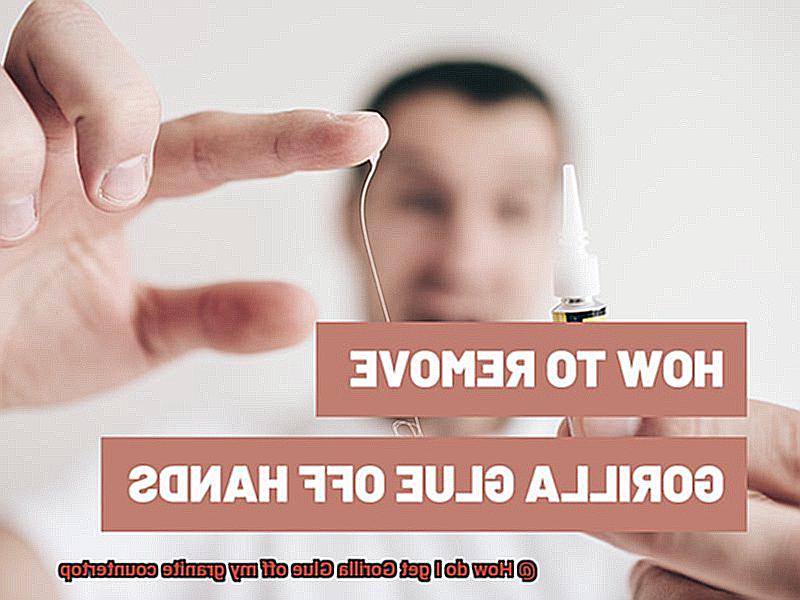
To gauge the gravity of the stain, professionals may request photographs or conduct a physical inspection of your countertop. This meticulous examination enables them to provide an accurate estimate of both cost and time required for the stain removal process.
Specialized Techniques and Tools:
Professionals employ a range of techniques to eradicate Gorilla Glue from granite countertops, tailoring their approach to the specific scenario. From the application of heat and utilization of chemical solvents to deft mechanical scraping, their arsenal of specialized tools ensures efficient and safe stain removal.
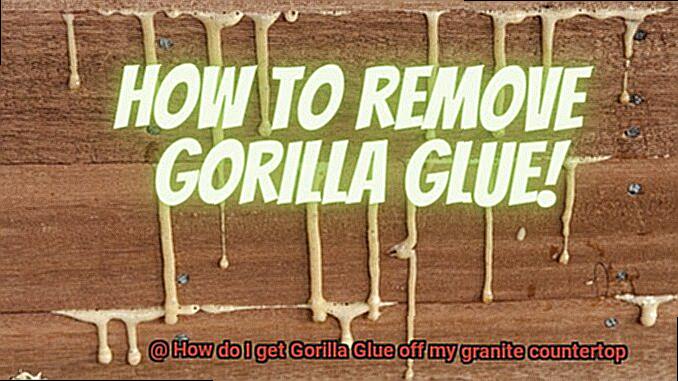
Cost Considerations:
While the allure of DIY methods may tempt you, it is crucial to consider the potential consequences. Professionals may command a higher price, but their expertise in dealing with stubborn stains like Gorilla Glue is worth every penny. Attempting removal without proper knowledge or tools can lead to further damage, resulting in costlier repairs down the line.
Conclusion
Removing Gorilla Glue from a granite countertop can be quite a challenge. However, with the right techniques and a little bit of patience, you can restore your countertop to its former glory. Here are some effective methods to tackle this sticky situation.
Firstly, try using acetone or nail polish remover that contains acetone. Soak a clean cloth or sponge in the acetone and gently dab it onto the glue. Allow it to sit for a few minutes to soften the glue. Then, using a plastic scraper or your fingernail, carefully scrape off the softened glue. Be cautious not to scratch the surface of your countertop.
If acetone doesn’t do the trick, you can also try using isopropyl alcohol or rubbing alcohol. Moisten a cloth with the alcohol and apply it directly to the affected area. Let it sit for a few minutes before attempting to remove the glue with a plastic scraper or your fingernail.
For stubborn Gorilla Glue stains, you may need to resort to mechanical means. Gently sanding the affected area with fine-grit sandpaper can help remove any residue left behind by the adhesive. Remember to be gentle and use light pressure so as not to damage your countertop’s finish.
In conclusion, dealing with Gorilla Glue on your granite countertop requires patience and careful execution of these methods. Whether you opt for solvents like acetone or isopropyl alcohol or resort to mechanical means like sanding, always prioritize protecting your countertop’s surface while removing the glue.

